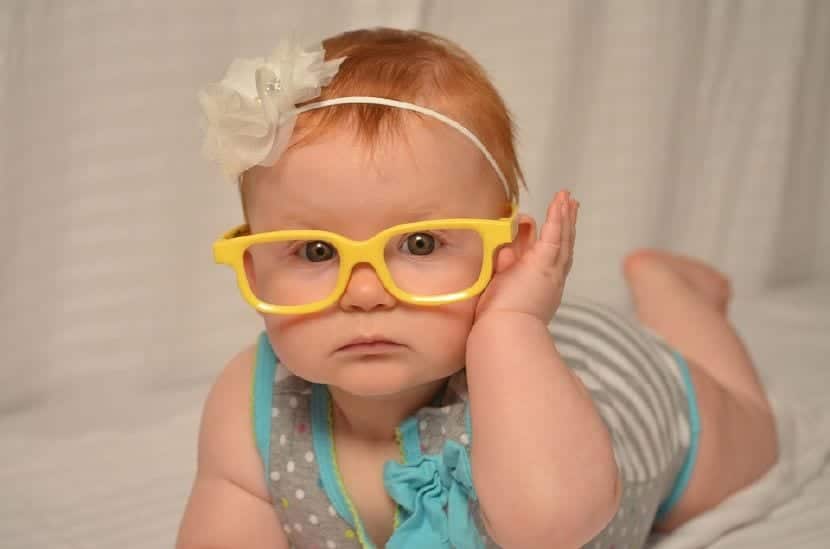
As we told you in the article How to prevent vision problems in our children, vision is one of the most important senses we have. Catching them early can prevent learning, motor, and school failure problems. Let's see what are the most common vision problems in children and how to detect them.
Most common vision problems in children
Every day it is more common for children to have some kind of visual impairment. It is recommended to start with ophthalmological examinations between two and four years of age. It is vitally important that the people who are most with children, parents and teachers, are pay attention to the signs that can even indicate, before the child has some kind of visual problem.
Among the most common vision problems in children are two types. Refractive (myopia, hyperopia and astigmatism) and binoculars (strabismus and lazy eye).
Myopia
Myopia is the vision problem that is growing the most in children in recent years. Consists in see well objects that are close but blur those that are further away.
How is myopia detected in children?
- They get too close to objects (books, television, toys ...)
- They narrow their eyes to see better.
- They rub their eyes constantly.
- They complain of visual fatigue.
- They say they don't read the blackboard well at school.
- They blink more than usual.
- He does not recognize faces until they are very close to him.
Farsightedness
Farsightedness is the exact opposite of myopia. Nearby objects are blurred and well the objects that are further away.
How is hyperopia detected in children?
- He is left with constant headaches.
- Stays from eye fatigue.
- Move objects away for a better view.
- Eyes red from exertion.
- La Farsightedness can cause strabismus.

Astigmatism
Astigmatism prevents clear focus of both near and far objects. If you suffer from myopia or astigmatism, vision worsens.
How is astigmatism detected in children?
- You frequently feel dizzy.
- Complains of tiredness after reading.
- Move objects too far or too close to be able to see them.
- He turns his head when he reads.
- He does not remember well what he reads.
- When reading, he stops at each of the words.
- He covers one eye or achina to be able to read better.
Squint
It is a fairly common problem in children, especially in the first six months. Consists of the loss of parallelism in the eyes, causing one eye to deviate up, in, or down. This causes double vision (each eye has different vision). As we have seen above it can be caused by another visual impairment.
How to detect strabismus in children?
- Puts weird head postures when looking at objects.
- One of the eyes deviates in a direction other than the other eye.
Lazy eye
The lazy eye consists of one of the eyes is incorrectly coordinated with the brain, causing it to not work well and to become lazy. The eye that sees well predominates and the other eye goes into the background, losing vision in that eye. 3% of school children may have a lazy eye. It is not easy to detect with the naked eye.
How to detect lazy eye in children?
- We can try to cover one eye and then the other. If we cover his “bad” eye, he will not complain, but if we cover his good eye, he will protest.
- You have a small deviation in one of your eyes.
To detect any type of vision problem in your children ahead of time, it is recommended to visit the ophthalmologist once a year especially when they are small. Some vision problems have no solution until they are older but can be treated so they do not get worse and you have a better quality of life.
Because remember ... early detection can prevent problems that can get complicated in the long run.